| Reviews & Columns |
|
Reviews DVD TV on DVD Blu-ray 4K UHD International DVDs In Theaters Reviews by Studio Video Games Features Collector Series DVDs Easter Egg Database Interviews DVD Talk Radio Feature Articles Columns Anime Talk DVD Savant Horror DVDs The M.O.D. Squad Art House HD Talk Silent DVD
|
DVD Talk Forum |
|
|
| Resources |
|
DVD Price Search Customer Service #'s RCE Info Links |
|
Columns
|
|
|
Prime Suspect: The Complete Collection

In 1991, the first episode of Lynda La Plante's "Prime Suspect" aired on ITV in the UK. The show, which stars Helen Mirren as Detective Chief Inspector Jane Tennison, was a landmark crime program, spanning seven series in total over the course of the next 15 years, as well as a short-lived American remake starring Maria Bello that aired for one season on ABC. D.C.I. Tennison was notable for the same reasons off screen as she was within the context of the series' story: she was a woman in the predominantly masculine world of murder investigation, a premise that not only makes for groundbreaking television, but (mostly) great entertainment, as well.
Although there are other great seasons of "Prime Suspect", the first series is obviously the most important, with its piercing observations about institutional sexism and misogyny. "Prime Suspect" may not have been the first TV show to document sexism, but it was almost certainly the first (and one of the most enduring) to observe that sexism, unfiltered, from a woman's perspective. The most crushing blows for Jane are not necessarily the reluctance of people in upper management to offer her work with any real substance, or the automatic dismissal coming from particularly bitter colleagues -- all frustrating roadblocks to success, but only minor setbacks. The real blow is the accumulation of little slights, all practically reflex on the part of those delivering them, but each fresh instance as insulting as the one before it. Crime scene officers hesitate to show Jane a grisly body. Whenever Jane enters a room with a male officer in tow, the people she's come to speak to look at the man, shake his hand, assume that he's in charge. Many of the officers call Jane "ma'am," which drives her up the wall. No matter how much progress she makes, she is involuntarily reminded of her "second-class" status as a female police officer, which only motivates her further.
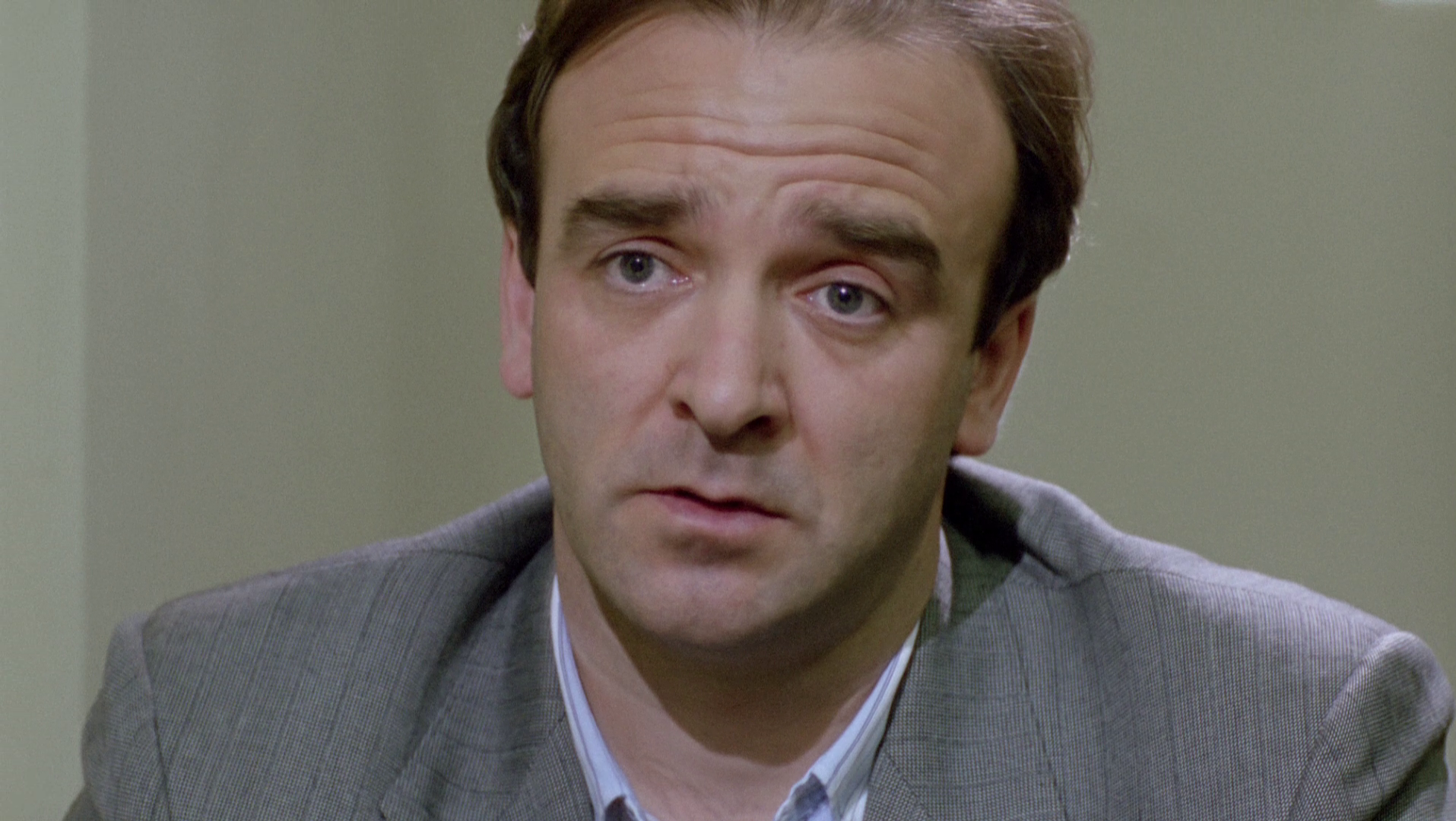
As an American, it's often easy to see what "Prime Suspect" does right simply by considering what US TV would've done wrong. When the investigation, into the murder of a woman named Della Mornay, becomes entangled in politics and slow progress, Tennison doesn't break down. Too many series would fall back on that old chestnut: a scene where the normally resourceful and emotionally bulletproof protagonist breaks down in private, to remind the viewer that they're human too. Although there are moments when Tennison becomes emotionally overwhelmed, they're little moments, conveying the story without director Christopher Menaul underlining them. Also, although anti-social tendencies would slowly be retconned into the character over the subsequent series, the Tennison of the first few seasons is not pre-packaged as one of those lonely person with nothing but her work, even when her work gets in the way of a relationship. In fact, the pressure Peter Rawlins (Tom Wilkinson) puts on Jane to be more emotionally available despite her determination to close her first case is like another instance of sexism; Peter claims to understand, yet is unable to truly grasp how important the opportunity is for her.
On top of everything else, "Prime Suspect" is an excellent mystery thriller, packed with unexpected twists and turns. The prime suspect in Della Mornay's death is George Marlow (John Bowe), a seemingly kindly man still struggling to get his life with his wife Moyra Henson (Zoe Wanamaker) back on track following a previous prison sentence. When the D.C.I. initially assigned to the case has a heart attack and dies, Jane lobbies hard for the position, only to discover that the team is particularly resentful, not only of a woman taking over an investigation, but also of her insistence of studying the case, by the book, down to the smallest detail, and the way her course of investigation potentially involves their former captain.  Jane's main nemesis, besides Marlow, is Sgt. Bill Otley (Tom Bell), who tries a number of scheming tricks and tips to try and undermine and destroy Tennison. It is particularly impressive how quickly Menaul is able to bring the viewer into Tennison's emotional highs and lows as the case takes shape, no doubt thanks to the accuracy of the show's portrayal of how real police work functions -- no gunfights or car chases, just old-fashioned deduction and reasoning.
Jane's main nemesis, besides Marlow, is Sgt. Bill Otley (Tom Bell), who tries a number of scheming tricks and tips to try and undermine and destroy Tennison. It is particularly impressive how quickly Menaul is able to bring the viewer into Tennison's emotional highs and lows as the case takes shape, no doubt thanks to the accuracy of the show's portrayal of how real police work functions -- no gunfights or car chases, just old-fashioned deduction and reasoning.
The massive success of the first series led to a follow-up, which picks up mere days after the previous chapter ends. The remains of a body is found buried in a garden in a black community, and Tennison encounters significant racial tension when she begins her investigation. Without warning, Tennison's superiors assign a black officer to the case, Bob Oswalde (Colin Salmon) -- a one-night stand of Tennison's which ended with its own tension. Oswalde, already irked at having to be the "token black guy" for the department, is driven further up the wall by Tennison's refusal to acknowledge him as a senior member of the team as a cover against favoritism. The outrage of the community and furstrations of Bob Oswalde come to a head in an unexpectedly tragic turn of events.
Series 2 is an interesting study in contrasts. The series begins with Oswalde and Tennison, staging an interrogation scene for trainees in which Oswalde plays a racist, sexist, uncooperative criminal. Although both of them slip in some tongue-and-cheek banter, Oswalde is hampered by a victim complex that has him second-guessing the intentions of every person he comes in contact with, including Tennison. Salmon's performance is strong to start, only to transform into something even more impressive as the series unfolds, complete with some nice parallels to Jane's journey in the first series. Early on in the investigation, Tennison and the crew rely on help from the Allen family, the former owners of the flat where the body was buried. 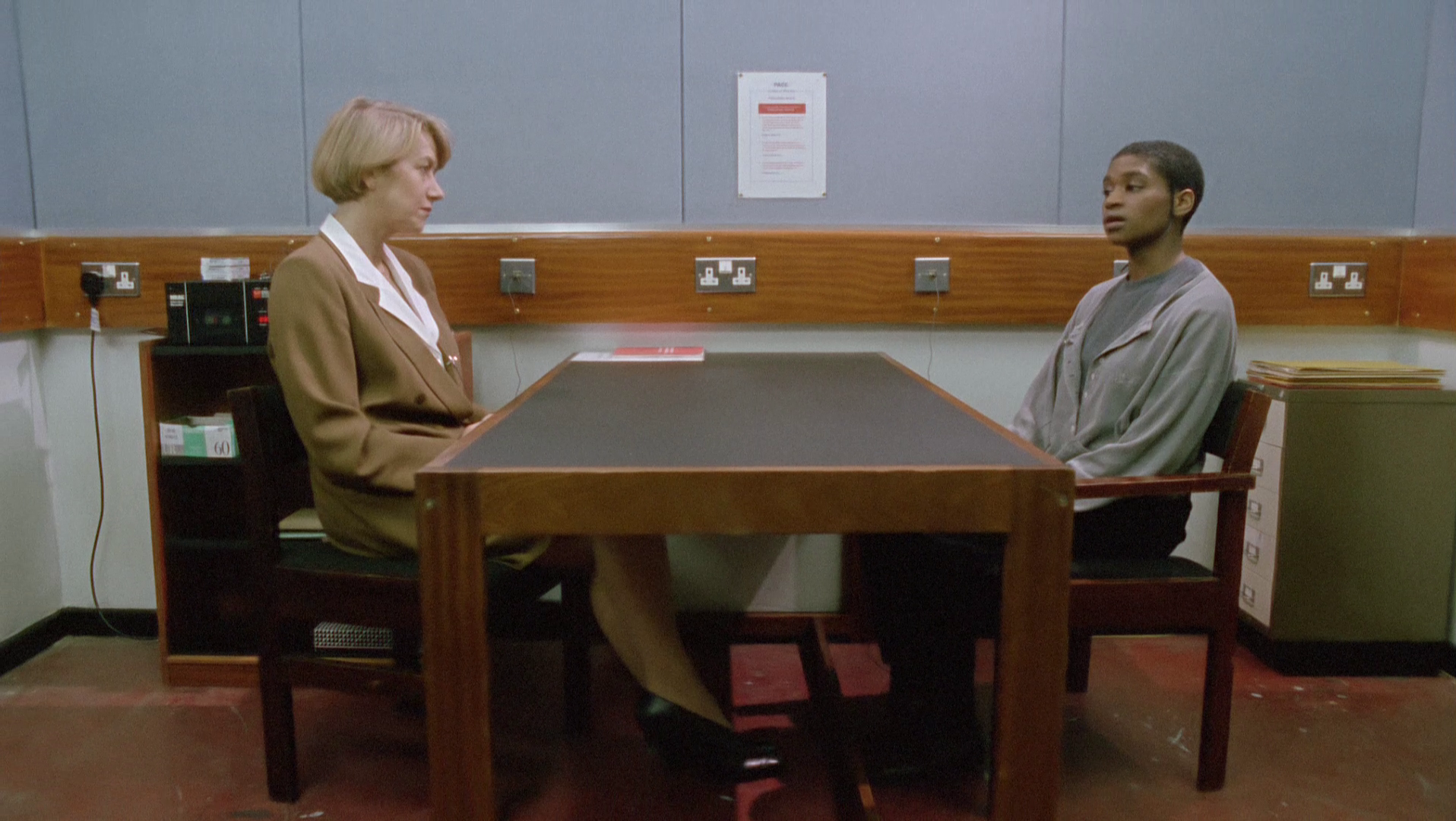 At first, Esme (Claire Benedict) and Vernon Allen (George Harris) are very welcoming, happily providing any information requested by the police, while Sarah Allen (Jenny Jules) and her fiance TOny (Fraser James) are cold and unwelcoming, but the show defly turns this dynamic on its head in the second half, with Sarah slowly realizing that Tennison is the only one who can help her weather an invasive psychological assault. Although the second series is not as fresh or groundbreaking as its predecessor, it's a dramatically complex follow-up that deftly navigates tough material.
At first, Esme (Claire Benedict) and Vernon Allen (George Harris) are very welcoming, happily providing any information requested by the police, while Sarah Allen (Jenny Jules) and her fiance TOny (Fraser James) are cold and unwelcoming, but the show defly turns this dynamic on its head in the second half, with Sarah slowly realizing that Tennison is the only one who can help her weather an invasive psychological assault. Although the second series is not as fresh or groundbreaking as its predecessor, it's a dramatically complex follow-up that deftly navigates tough material.
Series 3 and 4 are a study of a show trying to reinvent itself. In the former, Jane is transferred to a new department, where she finds herself contending with Bill Otley once again, while she and her new crew investigate the murder of a rent boy in an apartment fire. As Tennison works the case, increasing pressure begins to come down from above to wrap up the case and move on. Series 4 takes an even bigger step in a new direction, upping the episode count from two to three and choosing individual, self-contained stories for all three episodes. In these shows, Tennison handles the abduction of a small child, a shady business deal relating to the upper class, and, most interestingly, the re-opening of the Marlow case when two similar murders pop up.
The creators of the third series are clearly interested in trying to tweak and change the "Prime Suspect" formula, but they lack the courage to follow through on their convictions. The fact that the writers have chosen to return to Bill Otley is a perfect example of their "same-yet-different" mentality, allowing Otley to be less of a menace but unwilling to make him fully cooperative. The use of homophobia as a third issue of discrimination that the show can tackle feels like the correct instinct, and there is some excellent material with Mark Drewry as D.I. Ray Hebdon, who unexpectedly outs himself to the rest of the team. However, the filmmakers don't really play up much of the discrimination Ray faces, likely out of fear that it will feel overly familiar. The writers concoct a pregnancy thread for Tennison that feels perfunctory, both in terms of writing for a strong female character, and in a dramatic sense (although the final series uses this information to great effect). 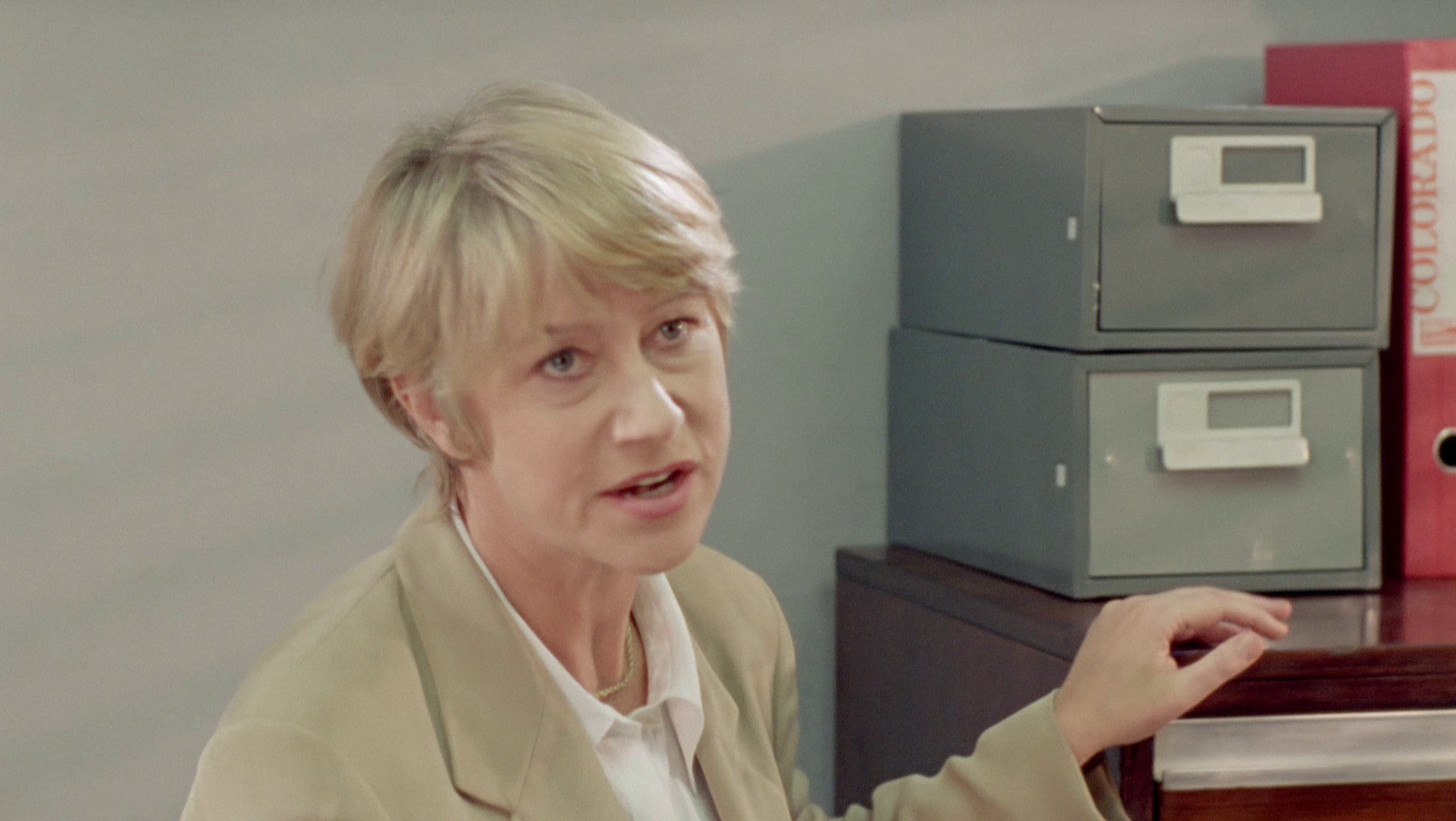 Series 3 is also the most star-studded, with David Thewlis, Ciaran Hinds, and Peter Capaldi joining the cast. All are good in the roles, yet none of the material really takes off, leaving it up to the actors to make the show exciting. The end of the series is a particularly disappointing dodge, sacrificing what could be a tough emotional moment in favor of a winking joke for the audience.
Series 3 is also the most star-studded, with David Thewlis, Ciaran Hinds, and Peter Capaldi joining the cast. All are good in the roles, yet none of the material really takes off, leaving it up to the actors to make the show exciting. The end of the series is a particularly disappointing dodge, sacrificing what could be a tough emotional moment in favor of a winking joke for the audience.
Although 3 is a bit too stiff, 4 is far too loose. The decision to tell three stories instead of one makes "Prime Suspect" feel more conventional, turning it into a "crime of the week" show rather than a complex and elaborate mystery. As a result, none of the stories really register. The third story, in which over-eager detectives rip open Tennison's Marlow case looking for a miscarriage of justice, could have been one of the show's most dramatically layered stories, but the writers struggle with Tennison in this episode. It's one thing for her to be convinced of her instincts and take up the responsibility to re-prove them, but the execution of the episode makes her look strangely desperate, crossing ethical boundaries to draw out the necessary information, including visiting Marlow's mother, and then dropping by the prison to see the man himself, practically taunting him. It's kind of distasteful. Furthermore, the intensity of the moment is hampered by the replacement of Bowe with Tim Woodward as Marlow. Woodward is fine, but the power of the moment would be in seeing Mirren and Bowe re-united. Series 4 is not a total bust -- Tennison's relationship with Dr. Patrick Schofield (Stuart Wilson) is interesting, and there are some good moments here and there, but there's a strong "shots in the dark" vibe to it.
Series 5 again moves Tennison to a new area, where she's stuck doing non-police work like talking to kids in class as a special guest speaker and going to political functions. She begs her way onto a murder case, where she'll have to get along with a group of unfamiliar faces in an unfamiliar town. The victim is the right-hand man of a local celebrity criminal known as The Street (Steven Mackintosh), who manages to drift from murder to murder without getting any incriminating blood on himself. 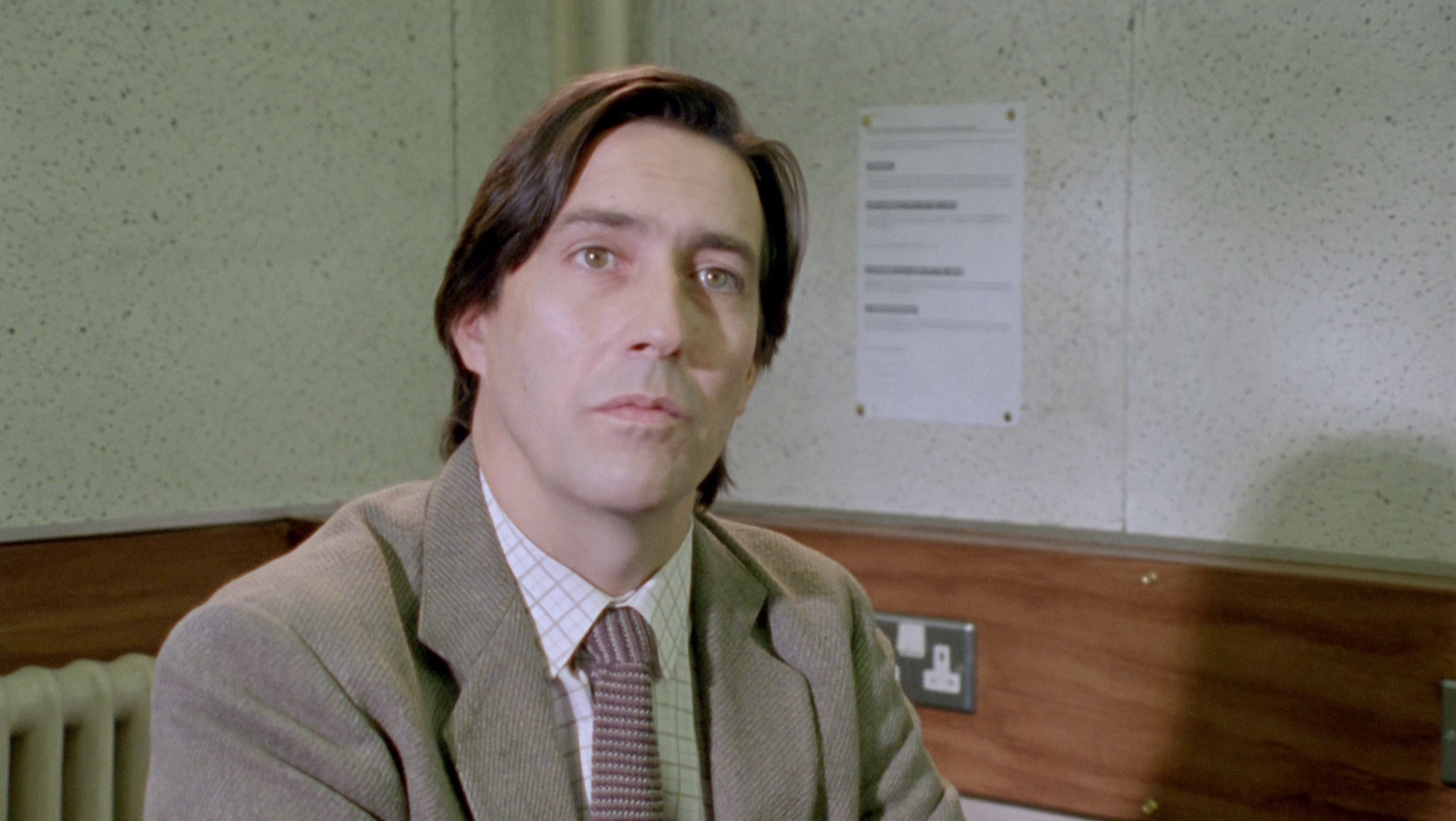 Through the course of the investigation, Tennison becomes invested in helping a young man, Campbell Lafferty (Joseph Jacobs), who once told Tennison in one of her school appearances that he wants "law and order."
Through the course of the investigation, Tennison becomes invested in helping a young man, Campbell Lafferty (Joseph Jacobs), who once told Tennison in one of her school appearances that he wants "law and order."
After two failed attempts, Series 5 finally figures out how to shake up "Prime Suspect" without fundamentally changing it. Not only does this series find ways to make Tennison emotionally vulnerable rather than emotionally charged, it piles on four different ways to do so: her connection to Campbell Lafferty, her need to shatter The Street's smug sense of invincibility, her relationship with her new boss, Ballinger (John McArdle), and by forcing her to rely on a new team (Julia Lane, David O'Hara, John Brobbey) to get the work done. Series 1 and 2 were exciting, engaging the viewer's interest with each new twist and turn, but Series 5 is more shattering -- the characters around Tennison are extremely well-developed, and thus, more compelling. It also locates a theme that fits along side racism and sexism in terms of discrimination: the innocence of youth, which Tennison sees in Campbell's plea for "law and order," motivating her through the case.
Following Series 5, the show took a seven-year hiatus at Mirren's request, returning in 2003 with what in my opinion is the least of the seven series. Subtitled "The Last Witness", this is easily Tennison's dullest case, presented without fanfare, and with the added misstep of invoking White Guilt to motivate Tennison, even if the writers puncture that notion slightly. The body of a Bosnian immigrant is found in the basement of a building under construction, and evidence suggests it may have been a Serbian named Duscan Zigic (Velibor Topic), with the motive being an encounter in a war in Bosnia years earlier. 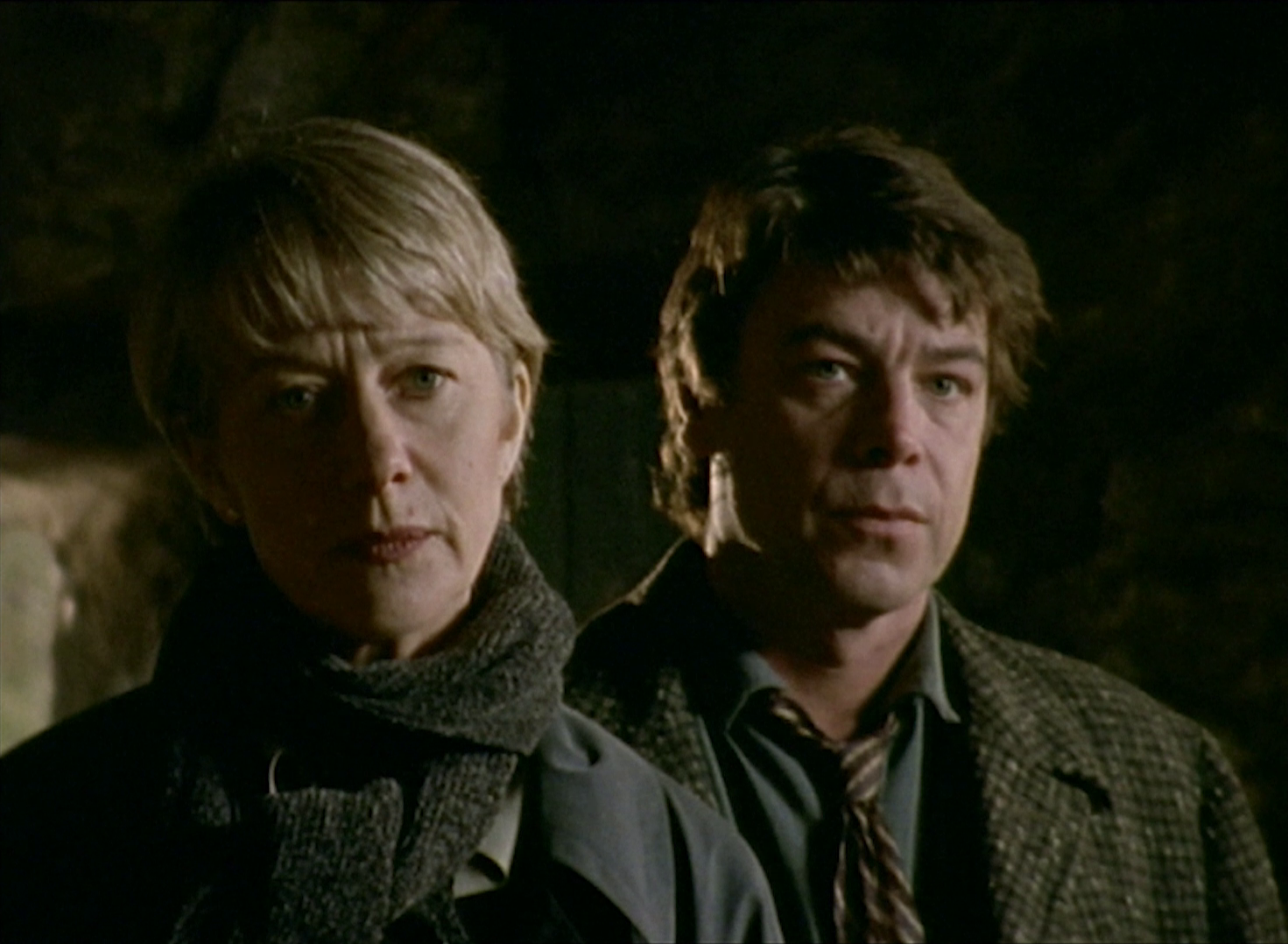 While higher-ups try to pressure Jane into retirement, she relentlessly pursues the case against Zigic, motivated by the knowledge of the war and atrocities that Zigic may have committed if he is indeed the killer.
While higher-ups try to pressure Jane into retirement, she relentlessly pursues the case against Zigic, motivated by the knowledge of the war and atrocities that Zigic may have committed if he is indeed the killer.
For such an important show, returning after a long hiatus, the total lack of fanfare or electricity in "The Last Witness" is very odd. For all intents and purposes, when viewed now, there is no real indication that anything's changed, outside of the show's directorial style. This series was directed by Tom Hooper, who would go on to make The King's Speech and 2012's Les Miserables, but his swooping camera angles and long shots almost feel overly dramatic for "Prime Suspect", which always seemed more methodical or clinical, less artistic. It's also quite strange because it doesn't feel like "The Last Witness" has anything new for Tennison to do, going through a familiar cycle of political maneuvering as Tennison tries to close the case. Although there are hints of sexism, discrimination no longer feels like a focus of Hooper's "Prime Suspect": Jane is an ordinary rebel, one of a million people who would rather do the Right Thing in the face of beaurocracy.
Thankfully, the "The Final Act" is a return to form, a companion in execution to Series 5. Once again, Tennison finds herself emotionally involved in her newest investigation, the murder of a teenager. Throughout the series, Tennison has been portrayed as someone who enjoys a drink, but here it's turned into full-blown alcoholism as her retirement looms, only weeks away. Her father (Frank Finlay) is dying of cancer, and her one source of solace is in the odd bond she forms with Penny Phillips (Laura Greenwood), the friend of the victim. "The Final Act" pulls no punches, allowing Tennison to make significant, life-altering mistakes, both in her personal and professional life, bringing back some of the ambiguity and uncertainty that made the first two seasons so compelling.
Of all the mysteries on "Prime Suspect", the one in "The Final Act" ends up rivaling the first series with its twists and turns, not necessarily in the solution to the crime itself, but the collateral damage the crime inflicts on those involved. In this closing chapter, there is an additional emphasis on how Jane's own decision-making process and investigative technique may even cause some of the fallout to occur, and the show mostly refuses to let her off the hook for it. Nobody who had seen the previous series of "Prime Suspect" would expect the show to sign off with a conventionally happy ending, but this is often a surprisingly painful final note, opening old wounds, going for the jugular.  Mirren, who seemed almost bored by the previous series, is in top form here, nailing every moment and nuance with the weight of all of Tennison's experience behind her. As most of Tennison's investment in previous series was purely professional, it is jarring to see the character so raw and exposed here, afraid for her father, afraid for her future, afraid she won't be able to help the family of the victim find closure. It's a tour-de-force worthy of the series, sending the story off in prime, live-wire fashion.
Mirren, who seemed almost bored by the previous series, is in top form here, nailing every moment and nuance with the weight of all of Tennison's experience behind her. As most of Tennison's investment in previous series was purely professional, it is jarring to see the character so raw and exposed here, afraid for her father, afraid for her future, afraid she won't be able to help the family of the victim find closure. It's a tour-de-force worthy of the series, sending the story off in prime, live-wire fashion.
Near the end of the final episode, one of the detectives, Simms (Robert Pugh) shares a moment with Tennison, marveling that she's going. She shrugs, considering her accolades. "Better than most," she says. To her list of achievements, Simms adds, "First female D.C.I." Tennison shoots back: "First Jane Tennison." "Prime Suspect" was a groundbreaking show, influencing an untold number of cop shows that have come after it by punching a Helen Mirren-sized hole in the police procedural's glass ceiling. Yet, its legacy is just as defined by its portrayal of a rich and realized character, one who fails, one who struggles, and yet, one who perseveres. It's an astounding character and an astounding performance, and the core of what made "Prime Suspect" what it is.
The Blu-Ray
"Prime Suspect" arrives in a seven-disc Blu-Ray case with some standard artwork. It would've been nice to see more of a design here -- the photos on the case seem to be taken from seasons at random, without a sense of "then-and-now" that would be more fitting for a complete series set. Oh, well. The disc comes in a slipcover that features a overall description of the series, which is replaced by season summaries on the actual packaging. All seven discs are packed inside a single, extra-thick Blu-Ray case, with a leaflet advertising the AcornTV streaming service inside.
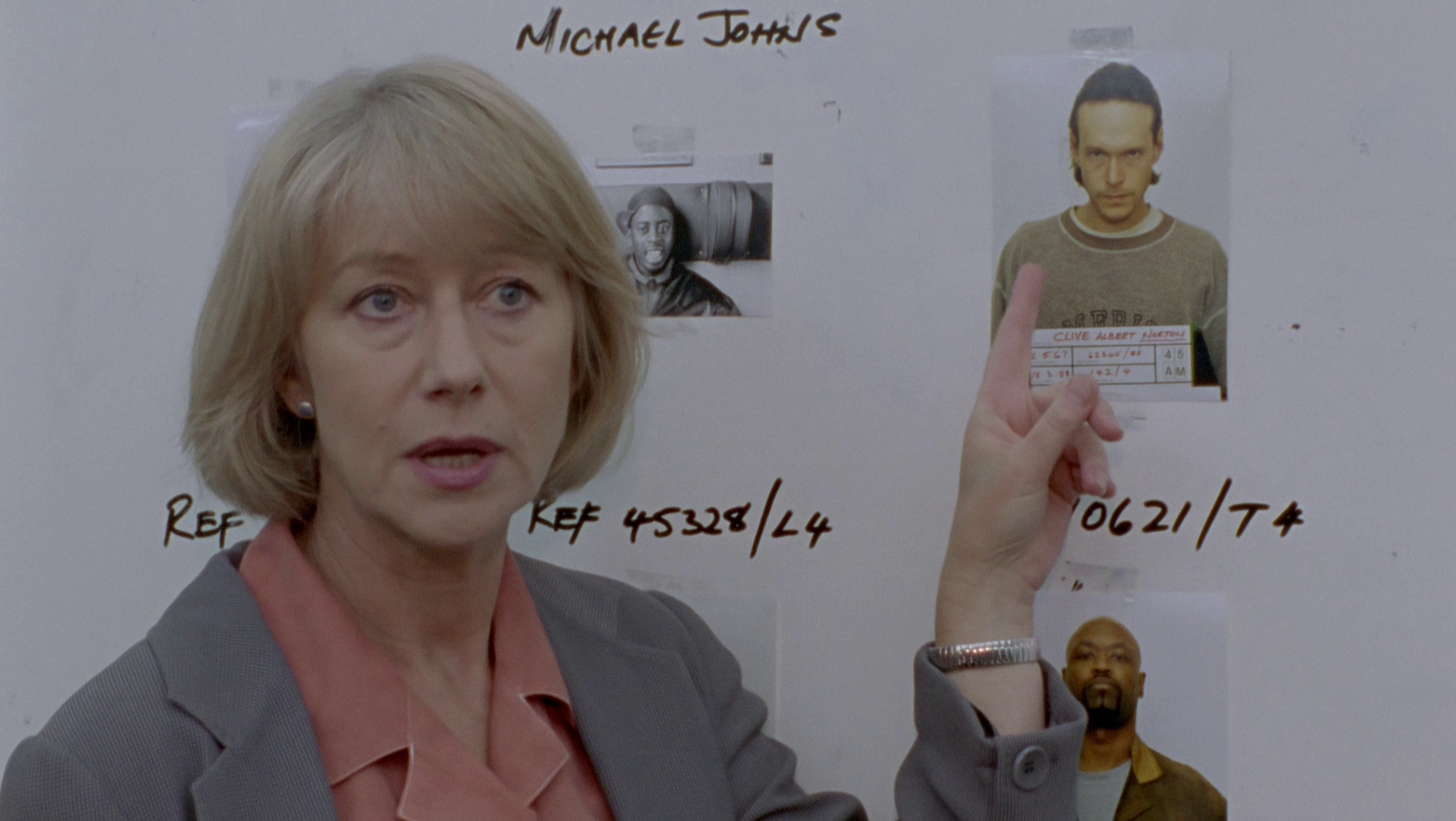
The Video and Audio
"Prime Suspect" has been re-mastered for Blu-Ray from the original 35mm negative, resulting in what is frequently a night-and-day difference from caps of the DVD edition available online. However, there are some major controversies and issues with the set that should be considered first.
In a move that will rightfully concern fans and newcomers alike, all seven series are presented in this set in 1.78:1 (AVC). For Series 6 and 7, this is the original aspect ratio, but the first five series were framed and broadcast in 1.33:1, and subsequently released on DVD in the same format. Although it's possible the filmmakers were consulted on this change, there is no proof of that in this set (each disc opens with a note about the image quality but does not comment on the re-framing), so unless proof surfaces otherwise, 1.33:1 must be considered the true aspect ratio. The good news is that this is not a pure crop; re-scanning the negative has revealed additional information on the left and right sides of the picture, and only a little has been removed from the top and bottom. Close-ups can appear a little cramped, but it's possible this is by design in many cases. As a first-time viewer of "Prime Suspect", I personally would not have known the show was not framed for widescreen simply by looking at it, but the more optimal route would've been to present the show as it was originally broadcast.
The second concern is about brightness. This transfer is a significant change from the DVD -- some scenes that were little more than vague blobs of color are now fully defined. Although the transfer generally looks "normal" in regards to light and shadow, especially as some older British television can appear on the light, drab side, it's possible, given the degree of difference, that these episodes have been overly brightened. With this in mind, there is occasionally a scene or two when faces in close up look like they have a spotlight on them, or an environment loses some detail to light. 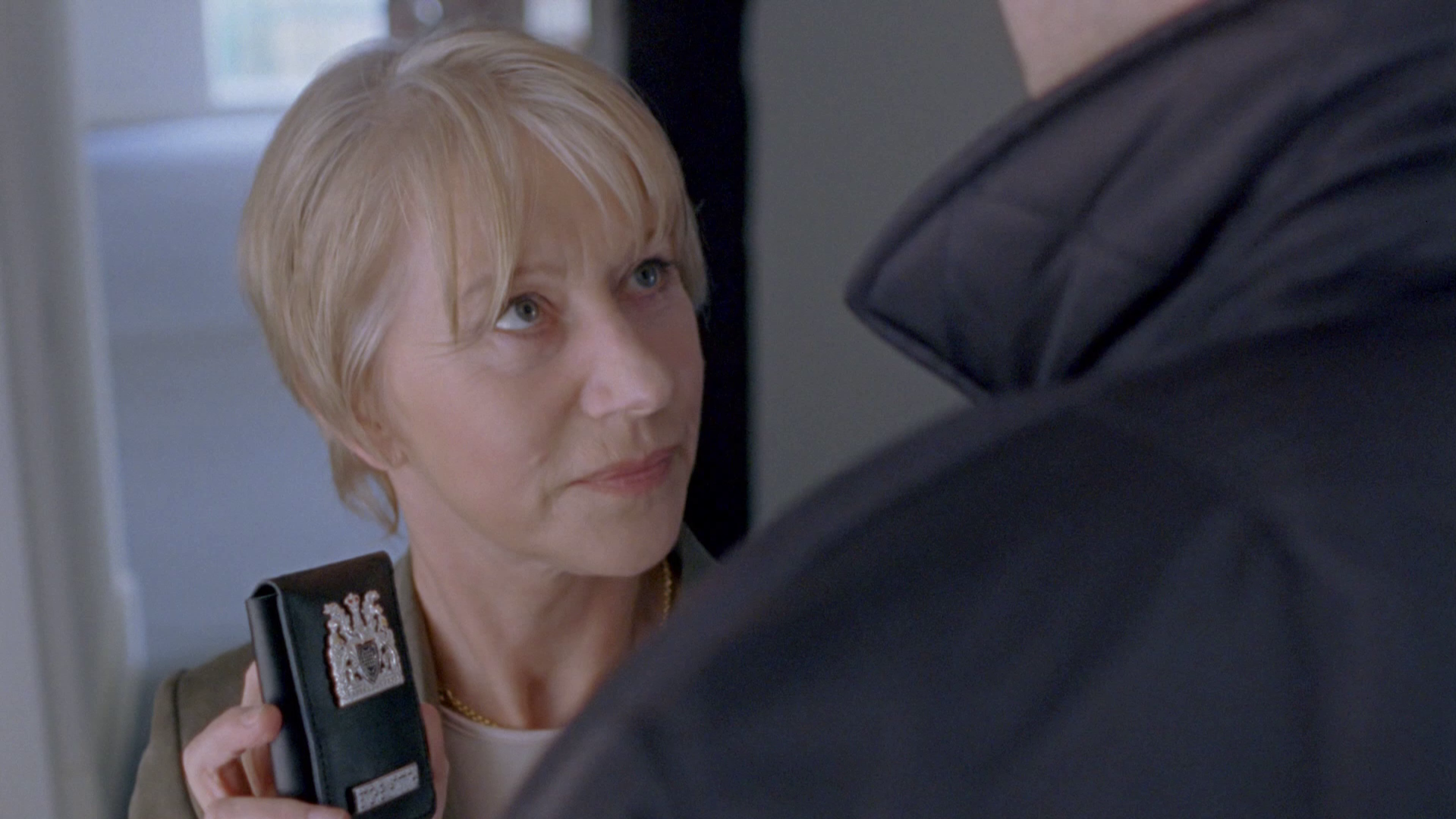 There's no question that the DVD is too dark, but it seems reasonable to suggest that the correct balance is actually in the middle.
There's no question that the DVD is too dark, but it seems reasonable to suggest that the correct balance is actually in the middle.
On a more sporadic level, Series 4 represents not only a departure from the other series in format (3 unconnected episodes), but also in video quality on this Blu-Ray set. It's clearly noted on the packaging that the first episode of 4, "The Lost Child," is presented in the original 1.33:1 aspect ratio. I suspect that the negatives for this season could not be located, or were in some state of disrepair, because this episode is no better than standard definition. It may be in 1080p, but it gains nothing from the additional resolution: ghosting, mushy detail, edge haloes, drab colors, chroma noise, artifacting, black crush -- you name it, it's here.
The second and third episodes of series four are presented in the 1.78 aspect ratio as the rest of the set, but from that point on, the occasional use of non-restored SD-looking footage continues through the rest of 4 and until the end of 5. Although 95% of the material or more is full HD, it is jarring and distracting when the show will jump back and forth between cuts. There are also couple of shots that are of "restored" quality, but are also crawling with noise. Some chroma noise can sometimes be seen in dark sequences throughout the series, but the issue is normally less frequent, and more importantly, much less pervasive than it is in Series 4. To my eye, the cropping is also noticeably worse or more evident when low-quality footage is being used, likely thanks to the lack of a re-scan to provide more image information (low point: 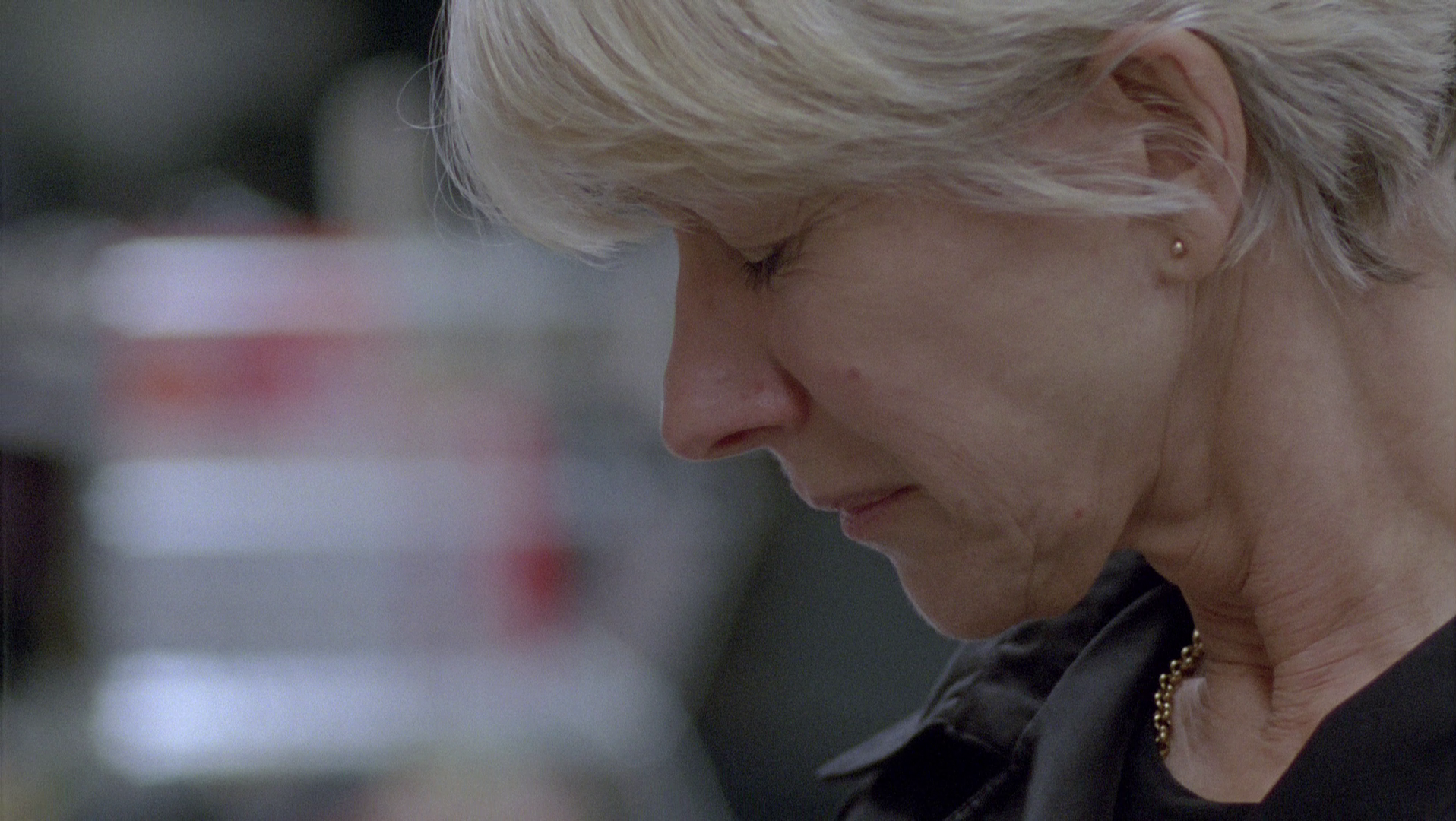 a team speech around the middle of episode 2 of Series 5, on a close-up of Mirren). The recap at the head of the second episode of Series 1 is shockingly ugly -- a copy of the original film, resulting in VHS levels of murkiness and softness. Considering everything else going on with this set, I've no idea why the HD footage from the end of Episode 1 wasn't just cut in, but it's not really a mistake or an error, just something that could be circumvented. Lastly, in the second half of Series 3, one conversation in an office looks noticeably soft, likely as the result of an optical zoom; it's glaringly obvious, but probably done in the original edit and not an issue with the Blu-Ray.
a team speech around the middle of episode 2 of Series 5, on a close-up of Mirren). The recap at the head of the second episode of Series 1 is shockingly ugly -- a copy of the original film, resulting in VHS levels of murkiness and softness. Considering everything else going on with this set, I've no idea why the HD footage from the end of Episode 1 wasn't just cut in, but it's not really a mistake or an error, just something that could be circumvented. Lastly, in the second half of Series 3, one conversation in an office looks noticeably soft, likely as the result of an optical zoom; it's glaringly obvious, but probably done in the original edit and not an issue with the Blu-Ray.
There is also one other fairly inconsequential but possibly notable alteration, which hardly has any impact on the program, but is noticeable: it looks as if the titles for the first two or three series have been digitally re-done -- no grain, a digital fade. These are literally white text on black backgrounds and last no more than 10 or 15 seconds, but I should point it out as another example of very minor revisionism.
Now, that may sound like a strike out, but as significant as these issues are, there are plenty technical positives, across the vast majority of the series. Most episodes of "Prime Suspect" are never going to look as razor-sharp or as vibrant as a big-budget film from the corresponding time period, but lots of additional details have clearly been resolved with the fresh scan. In close-ups, dimension and detail are on par with a current television show. As previously mentioned, colors tend toward a less-vibrant look that feels natural for an older UK TV show, but this may be a result of the brightness levels being boosted, which would "read" like a slightly faded negative. Predictably, this complaint lessens a little as the series goes on, with slightly richer colors in Series 5 compared to Series 1, while the last two, produced much more recently, appearing fully vibrant. No significant damage shows up, although the stock footage in Series 1 is noticeably dated, with blocky grain and heavy black crush (the first episode opens with a shot like this, which is startling -- thankfully, it gets much better). In some low-light wide shots, detail can appear a bit blotchy or smeary sometimes, around the edges of faces and such, but this is probably more of an optical illusion caused by lack of definition on the film than anything. Skin also can look unnaturally smooth, as if some unfortunate noise reduction has been applied, but the texture details in clothes and other surfaces lay that theory to rest, and many close-ups reveal a drastic difference in texture and detail compared to wide shots.
UPDATE (08/24/2013): A reader, Dave, has informed me that at the time the first "Prime Suspect" was airing, British TV networks Sky and British Satellite Broadcast were battling for domination. Sky used 4x3 presentations, and BSB used 16x9. Granada, the studio behind "Prime Suspect", was a major shareholder in BSB. Although it seems the episodes were aired in 4x3, it makes sense that efforts were taken to allow for the possibility of 16x9 re-framing. Still not a statement on behalf of the directors, but an explanation for why the show might've been set up for this new aspect ratio.
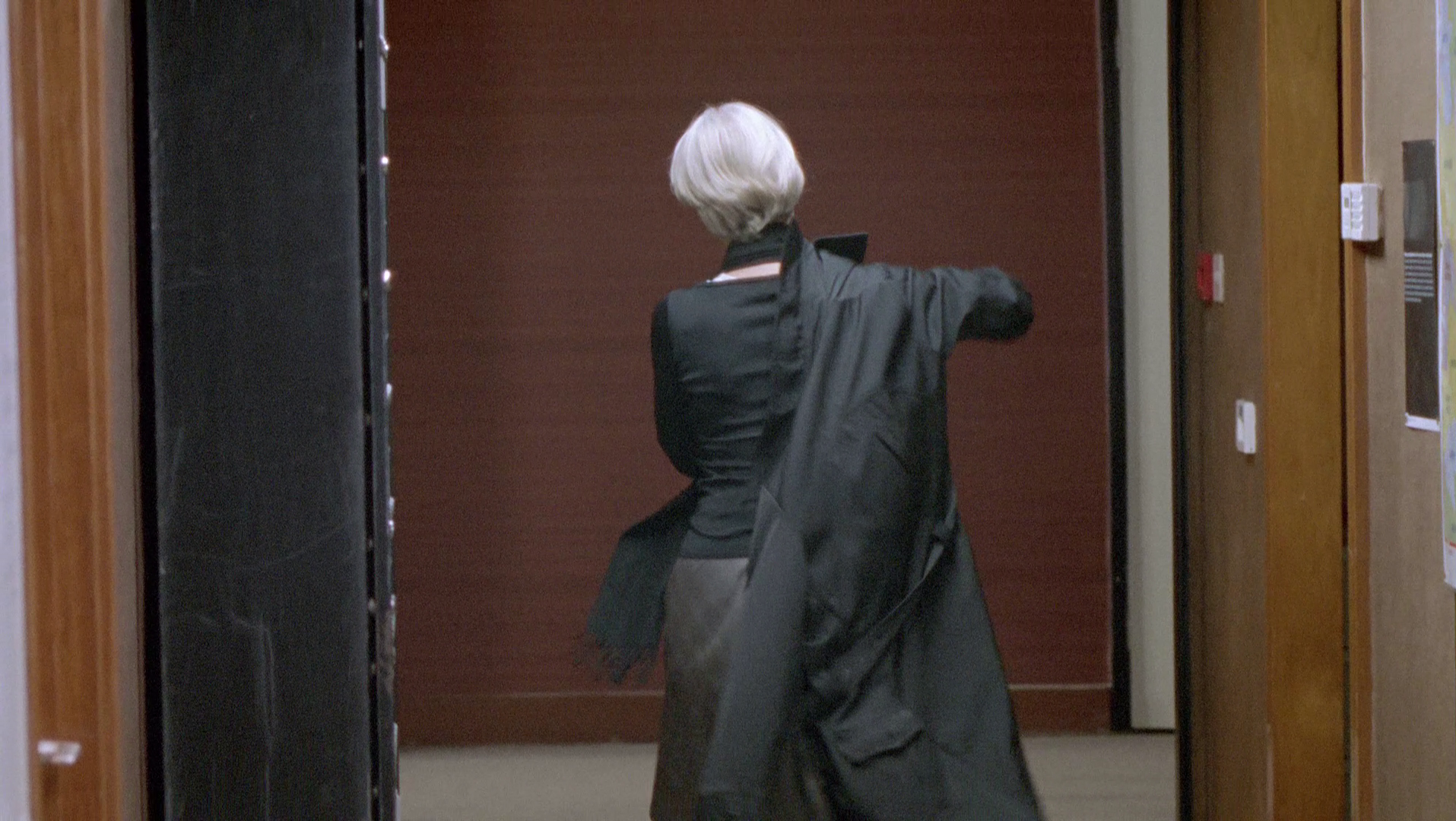
Sound is a DTS-HD Master Audio 2.0 track. Although it is only stereo, there is a great amount of separation and detail in this track, surrounding the viewer with the the ambience of a busy police station. Music is nicely defined and dialogue generally has a fresh crispness to it, with some minor exceptions in brief moments when the dialogue has been looped. Sound effects sound somewhat amplified, while any "pre-recorded" material sounds tinny and odd. Considering the significant revisionism with regard to the picture, it's entirely possible that the audio has been altered or enhanced in some way as well, but to my ears, this sounds very good. Note that the issues for Series 4 also extend to sound. For that season, there is a noticeable dip in sound quality: dialogue is tinny and occasionally a bit muffled, ambience takes a hit, and it generally sounds more dated and less crisp than the other seasons. English captions for the deaf and hard of hearing are also provided.
UPDATE (01/22/2014): Sadly, there's yet another caveat to add to the list of caveats here. Although it won't be noticeable to newcomers, it's been pointed out that the frame-rate difference between the UK and US has been improperly adjusted on this set, meaning that these Blu-Ray editions play slightly slower than intended and thus the sound is noticeably pitched down. The difference is pretty marginal, but it is there -- if this is likely to bother you, rent or borrow the discs before making a purchase.
The Extras
No new extras have been produced for this new Blu-Ray of "Prime Suspect." Two featurettes are included: a behind-the-scenes featurette (23:22, SD) on Series 6, and a retrospective special (46:00, SD) covering the whole run, made to promote the final series. The Series 6 featurette is a little dry, presented without much excitement or enthusiasm. The series overview is better; although it's got a bit of "TV special" gloss, the interviews are all pretty good.
A different promo for various Acorn shows plays before the menu on each disc.
Conclusion
On the basis of the show alone, this is an easy "must-buy" Blu-Ray set. However, the Blu-Ray itself is a bit of a mixed bag, offering as many alterations to the original presentation as it does improvements. As such, I can't rate the product higher than highly recommended, but it is highly recommended -- on the whole, I do think this is enough of an upgrade over the SD-DVD presentation to warrant a purchase.
Please check out my other DVDTalk DVD, Blu-ray and theatrical reviews and/or follow me on Twitter.
|
| Popular Reviews |
| Sponsored Links |
|
|
| Sponsored Links |
|
|
| Release List | Reviews | Shop | Newsletter | Forum | DVD Giveaways | Blu-Ray | Advertise |
|
Copyright 2024 DVDTalk.com All Rights Reserved. Legal Info, Privacy Policy, Terms of Use,
Manage Preferences,
Your Privacy Choices | |||||||













